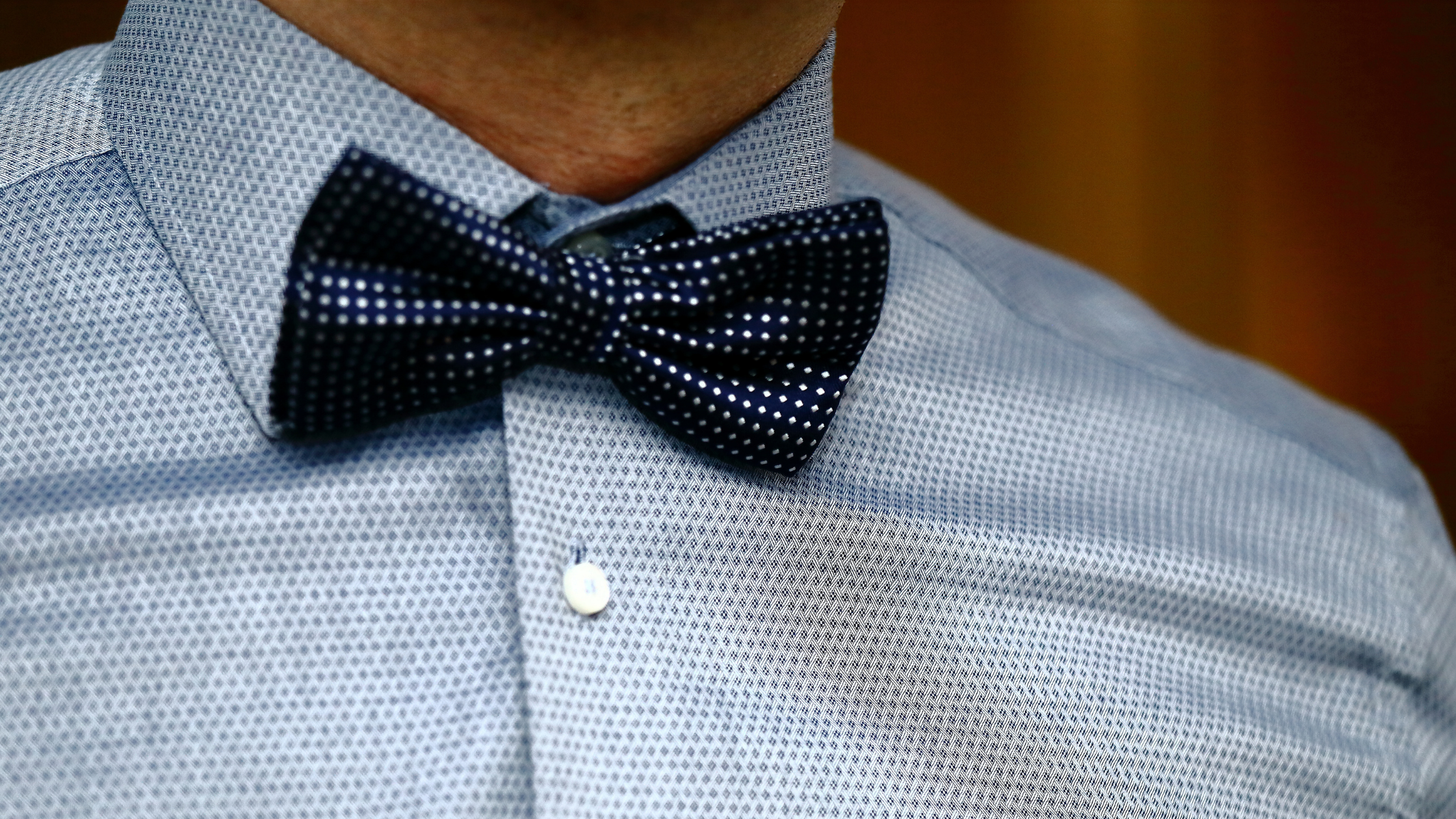Care Guide for Bow Ties: How To Wash and Store
February 26, 2023
Bow ties are a classic and sophisticated accessory that can elevate any outfit. However, improper care and maintenance can cause bow ties to become misshapen, stained, or even damaged, compromising their appearance and functionality. To ensure that your bow ties remain in excellent condition, it's important to know how to wash and store them properly. In this care guide, we will provide you with essential tips on how to care for your bow ties, including the do's and don'ts of washing and storage, so you can continue to use them as a fashionable and functional accessory for a long time.
WASH FREQUENCY
As needed
STORAGE METHOD
Hang
The Right Way To Wash Bow Ties
Washing Bow Ties
If your bow tie is machine washable, follow these steps:
- Untie your bow tie and loosen any adjustable bands.
- Place the bow tie in a mesh laundry bag to prevent it from getting tangled or snagged during the wash cycle.
- Select a gentle cycle and use cold water to prevent any shrinkage or damage to the fabric.
- Add a small amount of mild detergent to the wash cycle.
- Start the wash cycle and wait until it's finished.
- Remove the bow tie from the laundry bag and reshape it while it's still damp.
- Hang the bow tie to air dry or lay it flat on a clean towel to prevent any wrinkles or creases.
If you prefer to handwash your bow tie, follow these steps:
- Untie your bow tie and loosen any adjustable bands.
- Fill a sink or basin with cool or lukewarm water and add a small amount of mild detergent.
- Submerge the bow tie in the water and gently scrub it with your hands to distribute the soap.
- Let the bow tie soak for 5-10 minutes.
- Drain the sink or basin and refill it with clean water. Rinse the bow tie thoroughly to remove any soap residue.
- Squeeze out the excess water and reshape the bow tie while it's still damp.
- Hang the bow tie to air dry or lay it flat on a clean towel to prevent any wrinkles or creases.
If your bow tie is made of delicate or expensive fabric, it may be best to take it to a professional dry cleaner. Check the care label to see if it says "Dry Clean Only." Dry cleaning is recommended for silk or wool bow ties as these fabrics can be easily damaged when washed at home. Dry cleaning also helps to preserve the shape and quality of your bow tie.
How Often To Wash Bow Ties
Bow ties should be spot cleaned as needed with a gentle detergent, taking care not to soak or scrub the fabric, and then air-dried.

The Right Way To Store Bow Ties
How to Hang Bow Ties
- Choose a hanger that is the appropriate size for the bow tie.
- Hang the bow tie over the hanger, making sure it is centered.
- Smooth out any wrinkles or creases.
Expert Advice for Maintaining The Quality Of Your Bow Ties
To keep bow ties in top shape, there are a few practical tips to follow. First, avoid twisting or wringing the bow tie too hard as it may cause damage to the fabric. Second, it's recommended to spot clean bow ties as needed with a gentle detergent, taking care not to soak or scrub the fabric, and then air-dry them. Third, investing in mesh bags or a proper drying rack can help reduce wear and tear during the washing and drying process. Fourth, following the care label instructions is crucial to keeping bow ties in top shape, so always refer to the manufacturer's recommendations for best results. Lastly, when hanging bow ties, choose a hanger that is the appropriate size for the bow tie, hang the bow tie over the hanger, making sure it is centered, and smooth out any wrinkles or creases. By following these tips, you can help prolong the life of your bow tie and keep it looking its best for years to come.
DISCLAIMER
Just a friendly reminder that this care guide for bow ties only provides general advice. Your bow ties may have specific care requirements based on its material, style, and manufacturer instructions, so always check the care label before washing or storing it. If you're unsure about anything, it's always best to consult a professional cleaner. Please note that the author of this guide is not responsible for any damages or losses resulting from the use or misuse of any information from this blog.
Want to share this?
